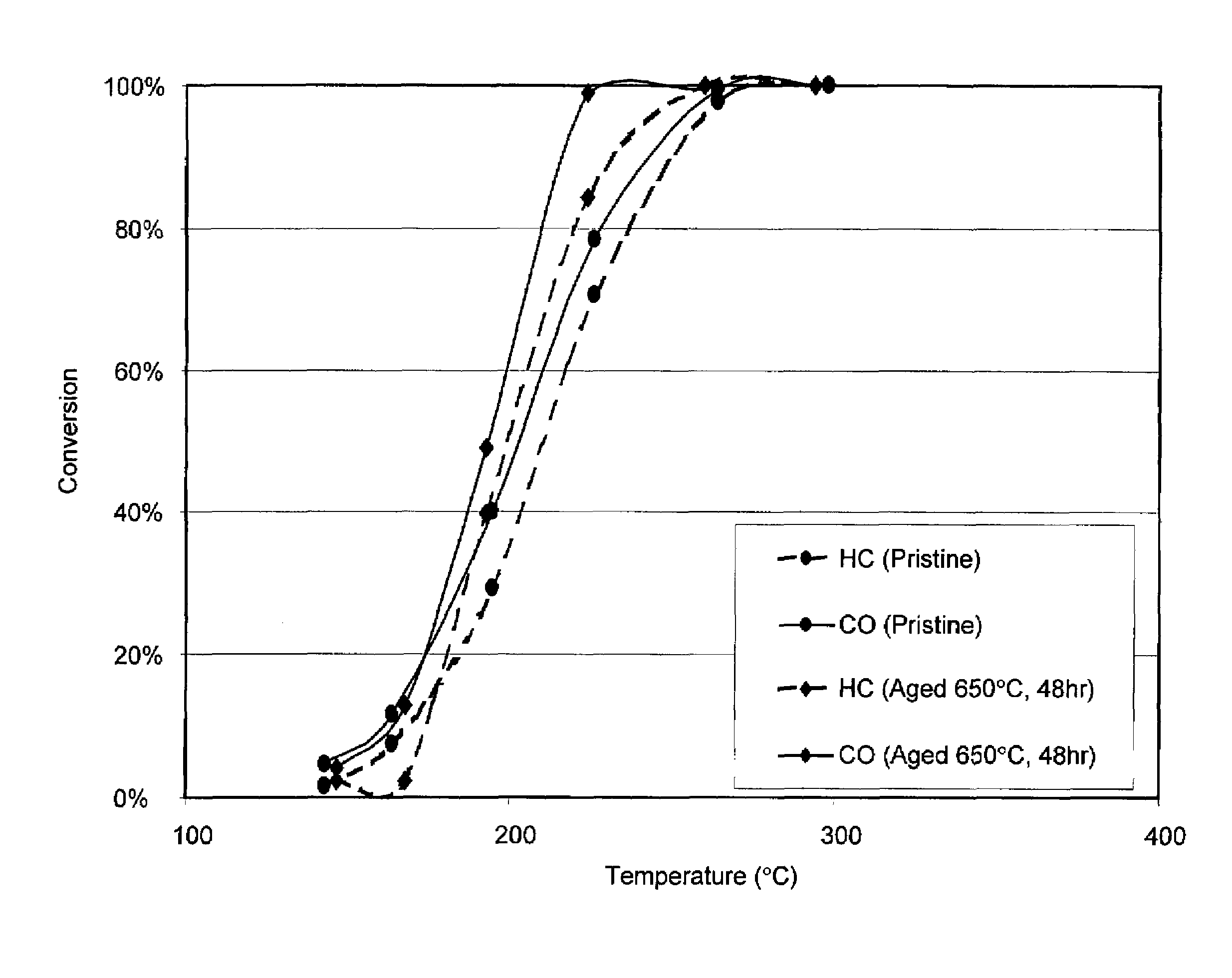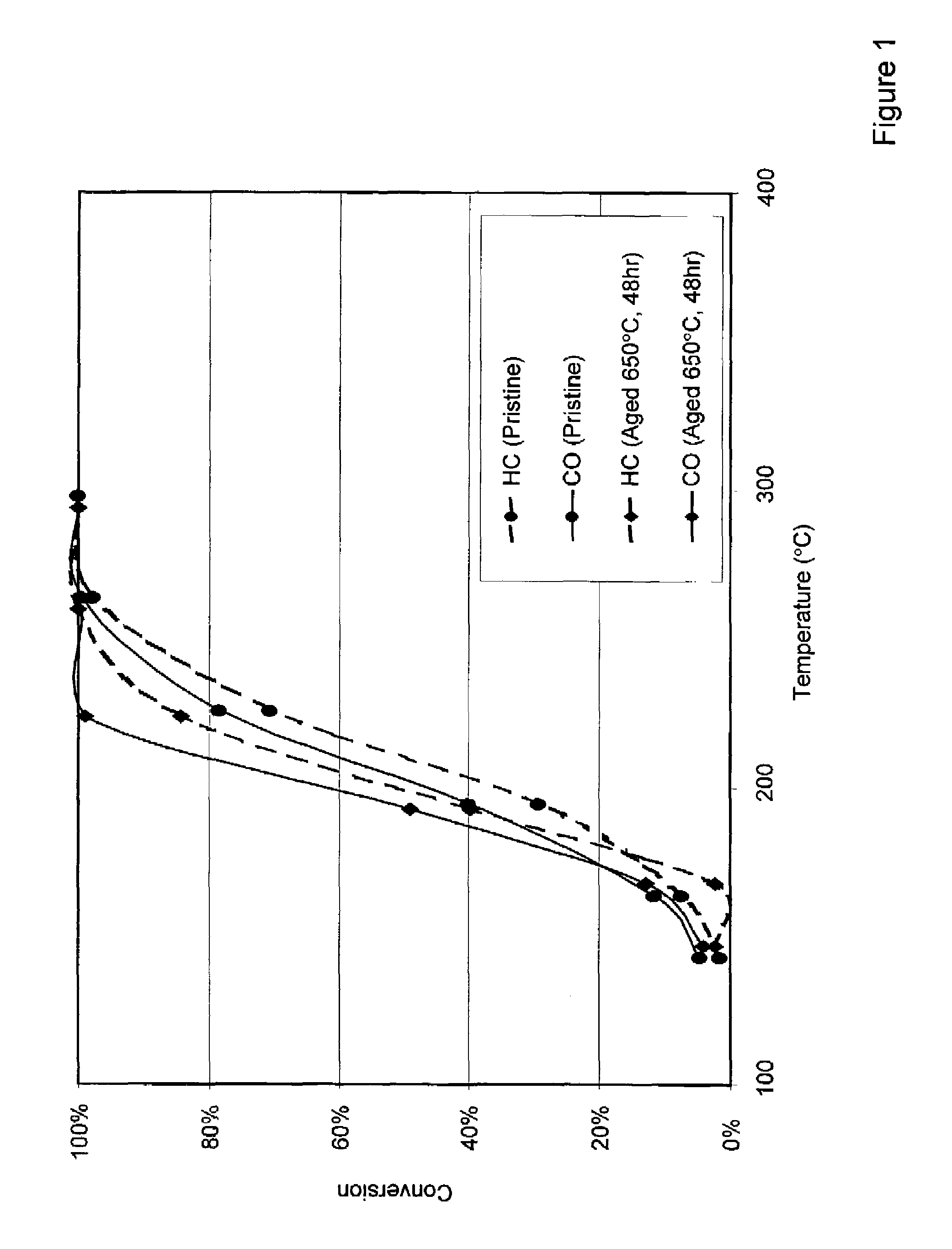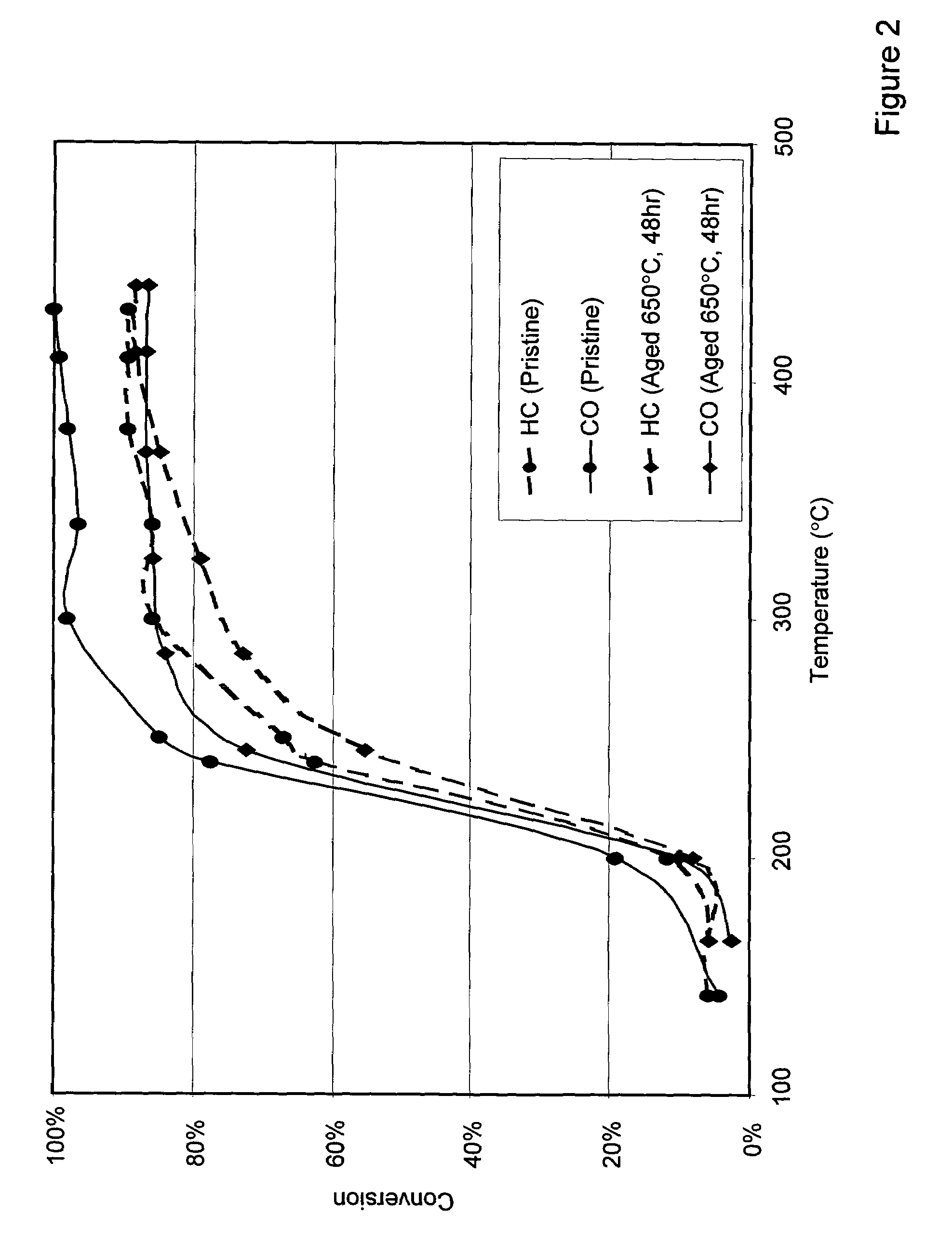Catalyzed diesel particulate matter filter with improved thermal stability
a technology of particulate matter and exhaust filter, which is applied in the direction of physical/chemical process catalysts, other chemical processes, separation processes, etc., can solve the problems of undesirable gaseous, liquid and solid emissions, carbon monoxide, hydrocarbons and soot, and formation of undesirable byproducts
- Summary
- Abstract
- Description
- Claims
- Application Information
AI Technical Summary
Problems solved by technology
Method used
Image
Examples
example 1
The Invention
[0034]Tungsten doped titania containing about 9.5% WO3 is obtained from Millennium Inorganic Chemicals Company. 15 kg of the titania is mixed with 35 liter of water and milled for about three hours. The resulting slurry is then diluted to about a 10–15% solid content. A Corning cordierite ceramic monolith diesel particulate filter element (EX-80, 5.66 inch diameter and 6 inch length, 200 cells per square inch) is dipped into the slurry for about 30 second. The extra slurry is removed by means of airknifing or vacuum suction. The coated substrate is then dried at 100–125° C. for about two hours, calcined at 550° C. for three hours and then cooled down to ambient temperature. The total titania loading is about 500 g / cf.
[0035]The washcoated cordierite substrate is then dipped into 500 ml of an aqueous solution containing 15 g / l of magnesium in the form of magnesium nitrate, 20 g / l of vanadium in the form of vanadium oxalate. After impregnation, the extra liquid is removed ...
example 2
Comparative Sample
[0039]A Corning cordierite ceramic monolith diesel particulate filter element (EX-80, 5.66 inch diameter and 6 inch length, 200 cells per square inch) is dipped into 500 ml of an aqueous solution containing 15 g / l of magnesium in the form of magnesium nitrate, 20 g / l of vanadium in the form of vanadium oxalate. After impregnation, the extra liquid is removed from the filter element by vacuum suction. Following impregnation, the filter element is dried at 125° C. for 2 hours and then calcined at 550° C. for 3 hours. The magnesium vanadate loading is 300 grams per cubic foot (10.6 g / l). After cooling down to ambient temperature, the filter element is dipped into a 500 ml aqueous solution of platinum sulfite acid (H4Pt(SO3)4) containing 5 g / l platinum. Extra liquid is removed by vacuum suction. Following impregnation, the coated filter element is dried at 125° C. for 2 hours and calcined at 550° C. for three hours. The platinum loading on a by weight basis is 25 grams...
PUM
| Property | Measurement | Unit |
|---|---|---|
| concentration | aaaaa | aaaaa |
| temperatures | aaaaa | aaaaa |
| temperature | aaaaa | aaaaa |
Abstract
Description
Claims
Application Information
 Login to View More
Login to View More - R&D
- Intellectual Property
- Life Sciences
- Materials
- Tech Scout
- Unparalleled Data Quality
- Higher Quality Content
- 60% Fewer Hallucinations
Browse by: Latest US Patents, China's latest patents, Technical Efficacy Thesaurus, Application Domain, Technology Topic, Popular Technical Reports.
© 2025 PatSnap. All rights reserved.Legal|Privacy policy|Modern Slavery Act Transparency Statement|Sitemap|About US| Contact US: help@patsnap.com



